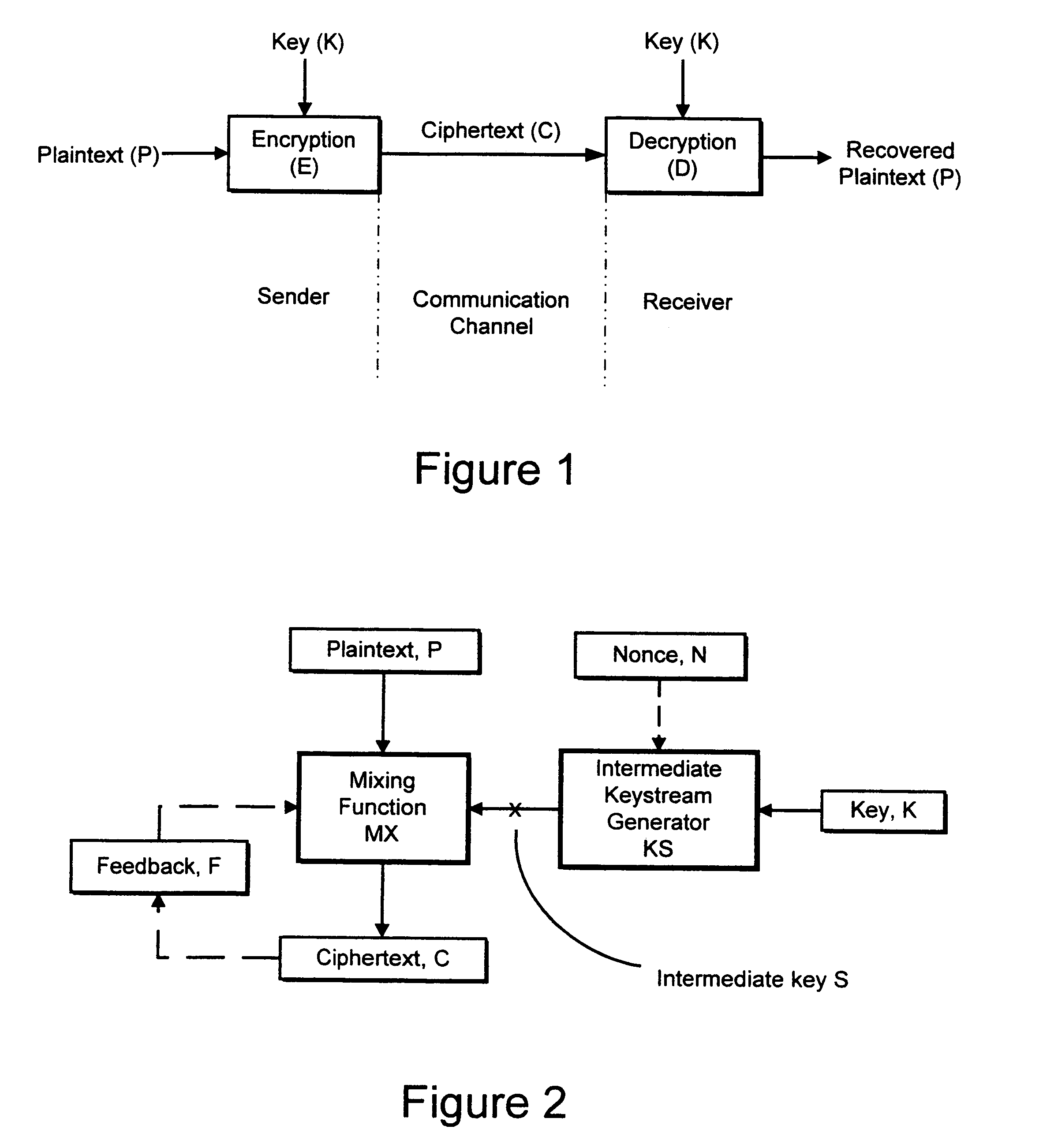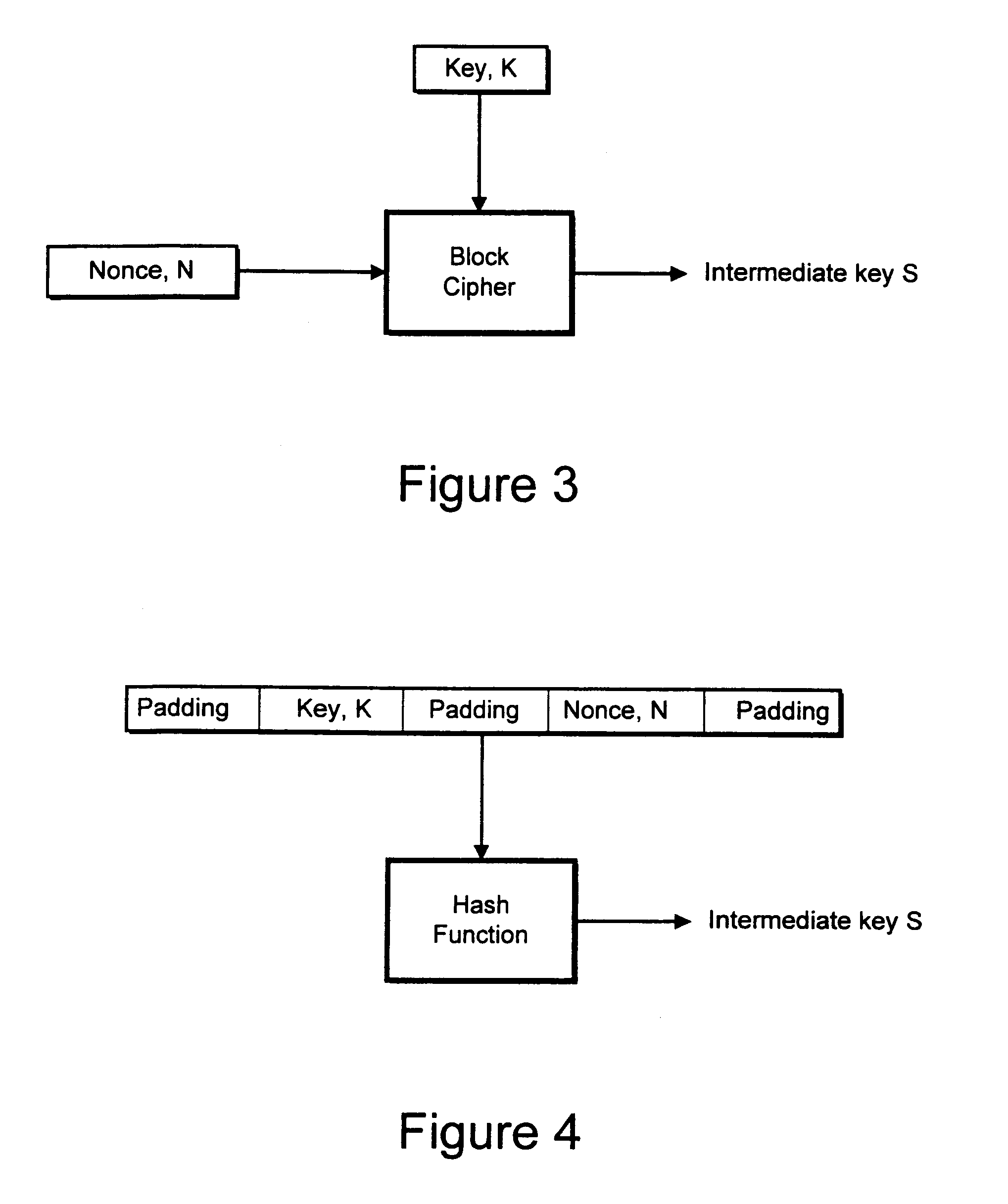Cryptographic apparatus and method
- Summary
- Abstract
- Description
- Claims
- Application Information
AI Technical Summary
Benefits of technology
Problems solved by technology
Method used
Image
Examples
Embodiment Construction
[0054]Referring to FIG. 2, the encryption apparatus according to the invention comprises an intermediate keystream generator KS and a mixing function MX.
Keystream Generator KS
[0055]KS is designed to generate an intermediate key, in the form of a pseudo-random number sequence S, in response to an encryption key K. KS is, for example, a known cryptographic pseudo-random number generator or an ideal cryptographic hash function or any device which is guaranteed to generate the same unpredictable sequence whenever the same input is given. For example, KS is a pseudo-random number generator used for known stream ciphers, such as WAKE, SEAL or RC4. KS can also be a block cipher in counter mode or a hash function with a counter. While a pseudo-random number generator can generate a very long plaintext sequence, for example 64 kB with the SEAL algorithm, a hash function generates a relatively short sequence, for example 160 bits. However, by using different successive inputs to the hash func...
PUM
 Login to View More
Login to View More Abstract
Description
Claims
Application Information
 Login to View More
Login to View More - R&D
- Intellectual Property
- Life Sciences
- Materials
- Tech Scout
- Unparalleled Data Quality
- Higher Quality Content
- 60% Fewer Hallucinations
Browse by: Latest US Patents, China's latest patents, Technical Efficacy Thesaurus, Application Domain, Technology Topic, Popular Technical Reports.
© 2025 PatSnap. All rights reserved.Legal|Privacy policy|Modern Slavery Act Transparency Statement|Sitemap|About US| Contact US: help@patsnap.com



